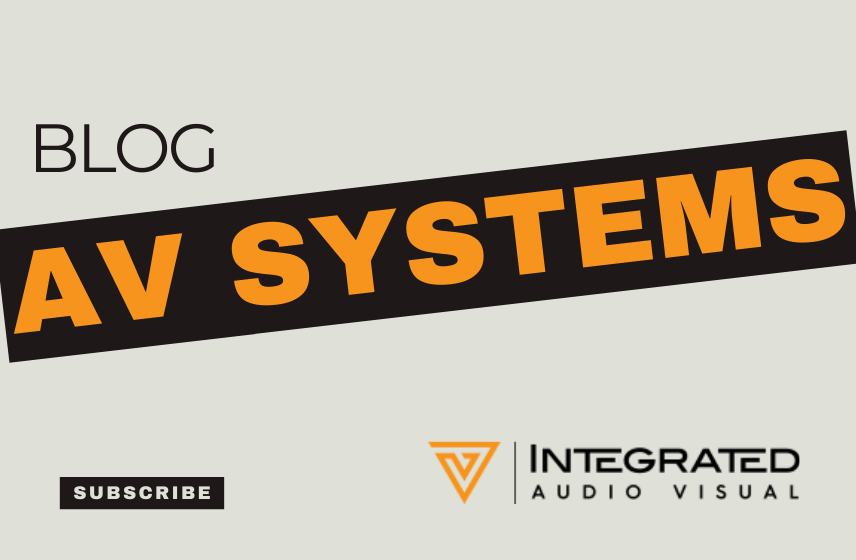When it comes to creating effective environments—whether it’s a high-tech conference room, a modern classroom, or a large auditorium—audio is often the most overlooked element. While visuals tend to steal the spotlight, poor sound quality can ruin the experience, hinder communication, and leave a lasting negative impression.
That’s where acoustic design comes in.
In this blog, we’ll break down the fundamentals of acoustic treatment, why it matters, and how it transforms spaces into professional, productive environments. Whether you’re designing a workspace, educational facility, or event venue, understanding audio is essential.
What is Acoustic Design?
Acoustic design refers to the strategic planning and implementation of sound control in a space. It includes managing sound reflection, absorption, transmission, and clarity—ensuring that audio is heard clearly, evenly, and comfortably.
Effective acoustic design takes into account:
- Soundproofing
- Speaker placement
- Ambient noise control
- Reverberation and echo reduction
These elements work together to create an environment where communication is easy and distraction is minimal.
Why Audio Quality Matters More Than Ever
In today’s world of hybrid work, online learning, and live-streamed events, audio quality directly impacts:
- Engagement
- Comprehension
- Professionalism
- Productivity
People will tolerate poor visuals far longer than poor sound. If your audience can’t hear clearly, they’ll tune out—fast.
1. Soundproofing vs. Acoustic Treatment: Know the Difference
Soundproofing blocks external noise from entering a room and prevents internal sound from leaking out. It involves construction elements like:
- Mass-loaded vinyl barriers
- Insulated walls and ceilings
- Acoustic door seals and windows
Acoustic treatment, on the other hand, focuses on improving sound quality within the room itself. This includes:
- Acoustic wall panels
- Ceiling baffles or clouds
- Bass traps and absorbers
Benefits:
- Reduced distractions
- Enhanced privacy
- Improved sound clarity in both directions
2. Speaker Placement: Getting It Right
Great speakers are only as good as their placement. In any AV setup, whether it’s a conference room or auditorium, speaker positioning impacts clarity, coverage, and immersion.
Key considerations include:
- Equal distribution of sound
- Avoiding dead zones and hotspots
- Matching speaker types to room size and acoustics
Benefits:
- Balanced, even sound for all listeners
- Less need for excessive volume (which can cause distortion)
- Better engagement during presentations or meetings
3. Managing Ambient Noise
HVAC systems, hallway chatter, traffic noise—these background sounds might seem minor, but they can quickly drown out important communication in a room.
Solutions include:
- Directional microphones and beamforming technology
- Acoustic ceiling tiles
- White noise generators for consistent background sound
- Strategic placement of noise-absorbing materials
Benefits:
- Greater speech intelligibility
- Less listener fatigue
- More focused environments
4. Tailored Acoustic Design for Specific Spaces
🔊 Conference Rooms
Meetings rely on clear communication, especially with remote participants. Echo, feedback, and overlapping voices can disrupt productivity. Integrated AV systems with optimized acoustics are essential for hybrid conferencing success.
📚 Classrooms and Lecture Halls
Students need to hear the instructor clearly from anywhere in the room. Proper acoustic treatment ensures equal audio distribution and reduced reverberation, boosting comprehension and participation.
🎤 Auditoriums and Performance Spaces
These large environments demand precise acoustic engineering to prevent echo and sound decay. Speaker arrays, delay zones, and digital sound processors are often used to create immersive, professional experiences.

Why Work with an Acoustic Design Expert?
Professional AV integrators and acoustic consultants bring deep expertise to ensure your space sounds as good as it looks. They assess your architecture, usage needs, and tech requirements to deliver a custom solution that:
- Enhances communication
- Elevates the user experience
- Meets compliance and safety standards
- Adds long-term value to your space
Final Thoughts
Audio is not an afterthought—it’s a cornerstone of great design. Whether you’re hosting a meeting, delivering a lecture, or producing a performance, poor sound will undermine even the most stunning visuals.
With thoughtful acoustic design and professional AV integration, you ensure your message is heard—clearly and effectively—every time.
Ready to Optimize Your Space for Sound?
If you’re building a conference room, revamping a classroom, or outfitting a performance venue, we’re here to help. Let’s talk about how custom acoustic solutions can transform your space into a hub of clarity and connection.


